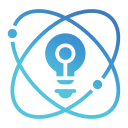This website uses cookies so that we can provide you with the best user experience possible. Cookie information is stored in your browser and performs functions such as recognising you when you return to our website and helping our team to understand which sections of the website you find most interesting and useful.
Bridging Classical and Quantum Computing Methods
The convergence of classical and quantum computing marks a defining era in technology, offering new pathways to tackle problems previously deemed intractable. While classical computing has powered the digital age with its ability to process vast amounts of information reliably and efficiently, quantum computing introduces entirely novel paradigms governed by the principles of quantum mechanics. Bridging these two approaches does not mean simply replacing one with the other, but rather finding synergies, hybrid techniques, and complementary roles that leverage the strengths of both. As industries and researchers strive to unlock solutions to increasingly complex challenges, the interface between classical and quantum computing stands as a frontier that promises innovation, scalability, and transformative capability.

Foundations of Classical and Quantum Computing




Applications Benefiting from Integration


